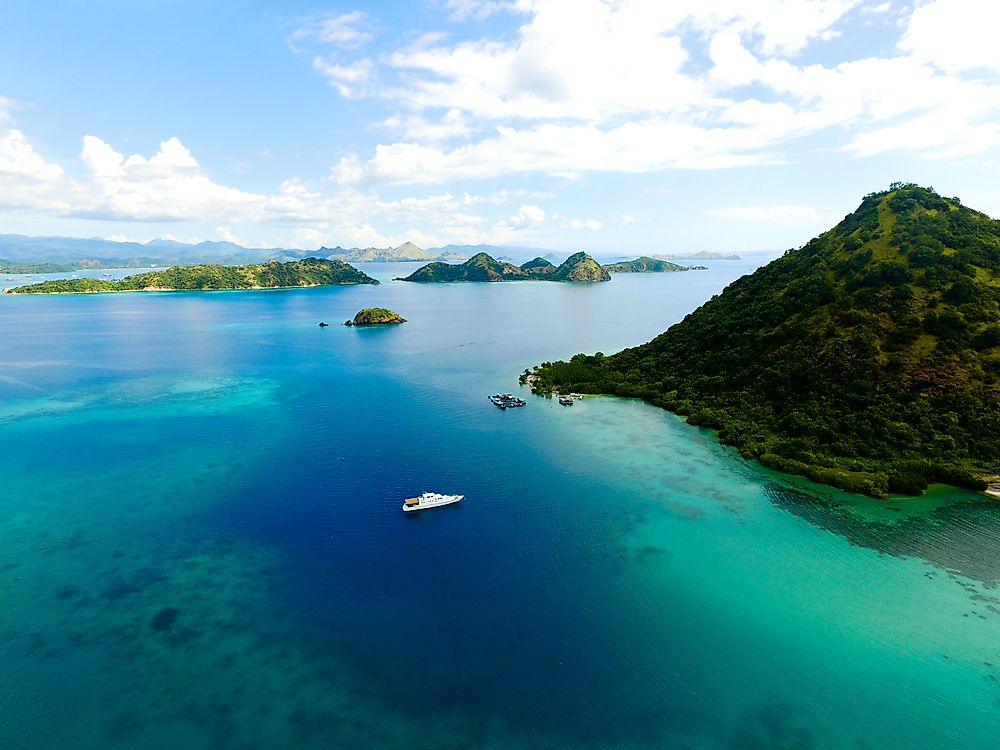What Is The Banda Arc?

The Banda Arc comprises of a set of island arcs. This horseshoe-shaped arc lies in Eastern Indonesia. The arc lies at the center of three major tectonic plates. These plates are the Pacific, Eurasia, and Indo-Australian plates. The collision and converging of the three major plates led to the formation of the Banda Arc. The arc is gigantic, runs across 1,000 kilometers, and has a depth of more than 650 kilometers. The arc has fascinated geologists for years. A lot of controversy and discussions have arisen regarding the formation of the Banda Arc. It is one of the most complex subduction zones in the world. It is a rare occurrence for one plate to move beneath another sinking into the Earth's mantle. This is the case of the Banda Arc.
Formation of the Arc
Unresolved mystery surrounds the history of the Banda Arc. Many studies are underway in an effort to understand the formation of the Banda Arc. One such study has revealed the presence of disintegrated ophiolites on the islands surrounding the Banda Arc. Studies on the metamorphic aureoles, at the base of the ophiolites, further unveil the formation of the arc. The studies have offered a simpler explanation of the formation of the Banda Arc. Obduction is the main mechanism that resulted to the placement of southern Tethyan onto the Australian continental margin.
Advanced Study of the Arc
An advanced study of the Banda Arc led to the discovery of several belts. These belts extend from the inner side (Banda Sea) to the outer side (Foreland Basin) of the arc. The belts are ophiolites belt, metamorphic belt, thrust and fold belt, the belt of uplifted Late Neogene basins, and the thrust and fold belt. The ophiolite belt is generally blocky and narrow in appearance. The metamorphic belt is composed of metamorphosed rocks. Permo-Triassic and Jurassic sediments originating from the Australian continental margin dominate the thrust and fold belt. Tertiary deep water and Late Mesozoic sediments dominate the additional thrust and fold belt. In simpler terms, the extension of Banda Arc results from the occurrence of rocks on both the inner and outer sides of the arc. Older rocks, which relate to ophiolites, form on the interior of the arc. On the outer side, younger rocks associated with young basins occur.
Banda Arc Formation Models
Three models emerged in an effort to understand the Banda Arc. The models developed after intense observation of near surfaces of Timor. These models are the imbricate model, the overthrust model and the rebound model. The imbricate model focuses on marine geophysical and geological data. The overthrust model mainly focuses on surface geology. According to rebound model, Banda Arc resulted from the entrance to a subduction zone by the Australian continental margin.
Three additional proposals exist regarding the formation of Banda Arc. According to Katili (1975) and Carrey (1976) for instance, the arc resulted from 180 degrees counterclockwise rotation of a former arc. On the other hand, Norvick (1979) argues that the Banda Arc achieved its present curvature from Late Cretacious. According to Silver et al. (1985) the Banda Arc resulted from pieces of the northern margin of continental masses in Australia. Studies regarding the Banda Arc are still ongoing in order to solve the complex mystery surrounding its formation.











